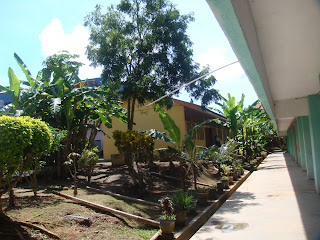The Neem tree (Veppilai) is variously known as "Sacred Tree," "Heal All," "Nature's Drugstore," "Village Pharmacy" and "Panacea for all diseases." Products made from neem tree have been used in India for over two millennia for their medicinal properties: Neem products have been observed to be anthelmintic, antifungal, antidiabetic, antibacterial, antiviral, contraceptive and sedative.[1] Neem products are also used in selectively controlling pests in plants. It is considered a major component in Ayurvedic and Unani medicine and is particularly prescribed for skin disease.[2]
- All parts of the tree are said to have medicinal properties (seeds, leaves, flowers and bark) and are used for preparing many different medical preparations.
- Part of the Neem tree can be used as a spermicide[3]
- Neem oil is used for preparing cosmetics (soap, shampoo, balms and creams, for example Margo soap), and is useful for skin care such as acne treatment, and keeping skin elasticity. Neem oil has been found to be an effective mosquito repellent.
- Neem derivatives neutralise nearly 500 pests worldwide, including insects, mites, ticks, and nematodes, by affecting their behaviour and physiology. Neem does not normally kill pests right away, rather it repels them and affects their growth. As neem products are cheap and non-toxic to higher animals and most beneficial insects, they are well-suited for pest control in rural areas.
- Besides its use in traditional Indian medicine, the neem tree is of great importance for its anti-desertification properties and possibly as a good carbon dioxide sink.
- Practitioners of traditional Indian medicine recommend that patients suffering from chicken pox sleep on neem leaves.
- Neem gum is used as a bulking agent and for the preparation of special purpose food (for diabetics).
- Aqueous extracts of neem leaves have demonstrated significant antidiabetic potential.
- Traditionally, slender neem branches were chewed in order to clean one's teeth. Neem twigs are still collected and sold in markets for this use, and in India one often sees youngsters in the streets chewing on neem twigs.
- A decoction prepared from neem roots is ingested to relieve fever in traditional Indian medicine.
- Neem leaf paste is applied to the skin to treat acne, and in a similar vein is used for measles and chicken pox sufferers.
- For further reading please click here




No comments:
Post a Comment